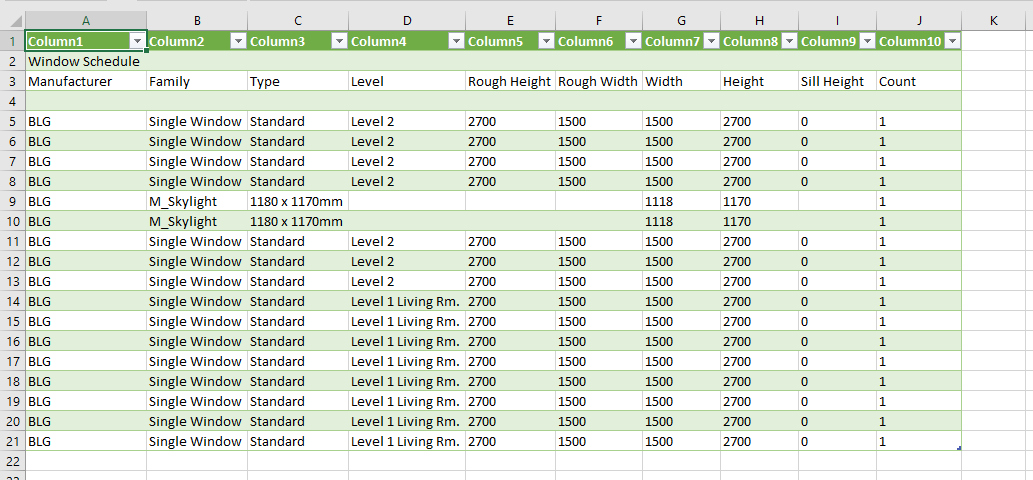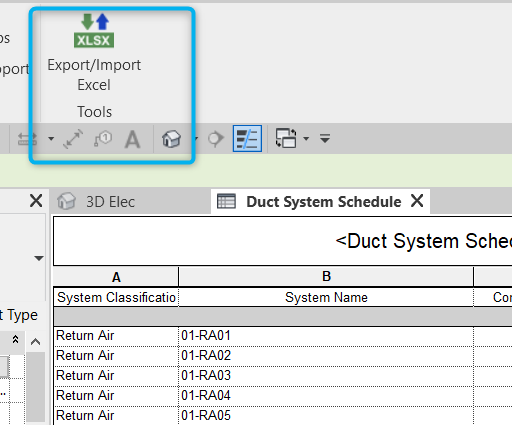Revit Tool to Empower Your Structure Info Modeling
Wiki Article
Revit Excel Integration Demystified: Simplifying Process for Improved Project Sychronisation
Look no further, because Revit Excel Assimilation is here to debunk the process and improve your projects. In this article, we will certainly lead you with the relevance of Revit Excel Assimilation, reveal you exactly how to improve operations, and give finest methods for successful assimilation.The Relevance of Revit Excel Assimilation
You need to recognize the relevance of Revit Excel integration to properly simplify your operations and improve project coordination. The assimilation of Revit, a powerful structure details modeling (BIM) software application, with Excel, an extensively made use of spreadsheet program, offers various advantages for engineers, engineers, and building and construction experts.

By integrating Revit with Excel, you can get rid of manual information access and decrease the threat of errors. This not only saves time but also makes sure accuracy in your job documents. You can update data in Excel, and it will immediately update in Revit, maintaining uniformity throughout your task.
Additionally, Revit Excel assimilation improves task coordination by making it possible for efficient collaboration among staff member. With information integrated between Revit and Excel, every person can access the most up-to-date info and interact effortlessly. This advertises smoother interaction, minimizes disputes, and boosts total job effectiveness.
How to Enhance Workflows With Revit Excel Assimilation
Enhance your procedure by effortlessly attaching Revit and Excel to simplify your operations. By integrating these 2 powerful tools, you can enhance task coordination and boost effectiveness in your work. With Revit Excel combination, you can conveniently move information between the two platforms, permitting for seamless interaction and cooperation.

One more benefit of Revit Excel assimilation is the capacity to develop custom records and evaluate data better. With Excel's durable functions, you can perform advanced computations, create charts and charts, and create extensive records based on the information from your Revit versions. This permits you to get valuable understandings and make educated decisions throughout the task.
Enhancing Task Control With Revit Excel Combination
By seamlessly linking your design software application with powerful information analysis devices, you can greatly improve the sychronisation of your tasks. Revit Excel combination enables you to enhance your process and enhance project coordination by eliminating hands-on information access and reducing errors. With this combination, you can website here conveniently move information between Revit and Excel, ensuring that all job information is up to date and exact.Among the vital benefits of Revit Excel assimilation is the capability to import and export data between both software application seamlessly. This indicates that you can easily import existing job data from Excel right into Revit, saving you time and initiative in coming back information. You can export project data from Revit to Excel, allowing you to carry out innovative analysis and estimations using the powerful attributes of Excel.
In Addition, Revit Excel assimilation enables you to create vibrant links between the two software application (revit add ins). This indicates that any type of changes made in Revit will automatically update in Excel, and vice versa. This dig this guarantees that all job stakeholders are working with one of the most up-to-date information, enhancing project control and reducing the risk of errors
Overcoming Obstacles in Revit Excel Integration
When overcoming obstacles in the assimilation of Revit and Excel, it's vital to guarantee seamless data transfer and reduce mistakes. One common difficulty is the compatibility of data styles between Revit and Excel.An additional challenge is the absence of synchronization in between Revit and Excel. It's critical to establish a clear process that makes sure both platforms are updated in real-time. This can be achieved by making use of cloud-based partnership tools or establishing a system for normal information syncing.
Managing big datasets can also be troublesome. When it comes to taking care of huge quantities of data, revit and Excel have different capabilities. To overcome this challenge, you can split the data into smaller, manageable pieces or make use of data filtering system methods to concentrate on specific areas of rate of interest.
Finally, human mistake can result in disparities between Revit and Excel data. It is very important to train group participants on the combination procedure and develop quality assurance steps to catch any kind of errors. Regular audits and cross-checks can aid determine and correct any kind of inconsistencies.
Ideal Practices for Effective Revit Excel Assimilation
To ensure successful combination of Revit and Excel, it's essential to follow some finest techniques that will certainly aid improve your workflow and decrease mistakes. In addition, when connecting Excel information into Revit, guarantee that the data is totally free and clean from any formatting issues that can trigger errors.One more crucial practice is to consistently update your Excel data in Revit. This can be quickly attained by developing a clear procedure for updating the connected information. Make it a habit to review and upgrade the data at normal periods, especially when changes are made to the project. This will aid keep your data exact and approximately day.

Verdict
So, there you have it - revit Excel combination does not have to be a complicated task. With revit Excel integration demystified, you'll be well on your means to optimizing the possibility of these devices and taking your projects to new elevations.You can export your Revit routines to Excel, make adjustments or updates in Excel, and after that import the upgraded data back into Revit with just a couple of clicks. Revit Excel integration allows you to enhance your operations and enhance task control by eliminating hands-on information entrance and lowering mistakes. With this assimilation, you can quickly transfer data in between Revit and Excel, making sure that all task details is up to date and exact.
You can export job data from Revit to Excel, allowing you to do advanced analysis and computations using the effective features of Excel.
Furthermore, when connecting Excel information right into Revit, make certain that the information is tidy and free from any kind of formatting problems that can cause mistakes.
Report this wiki page